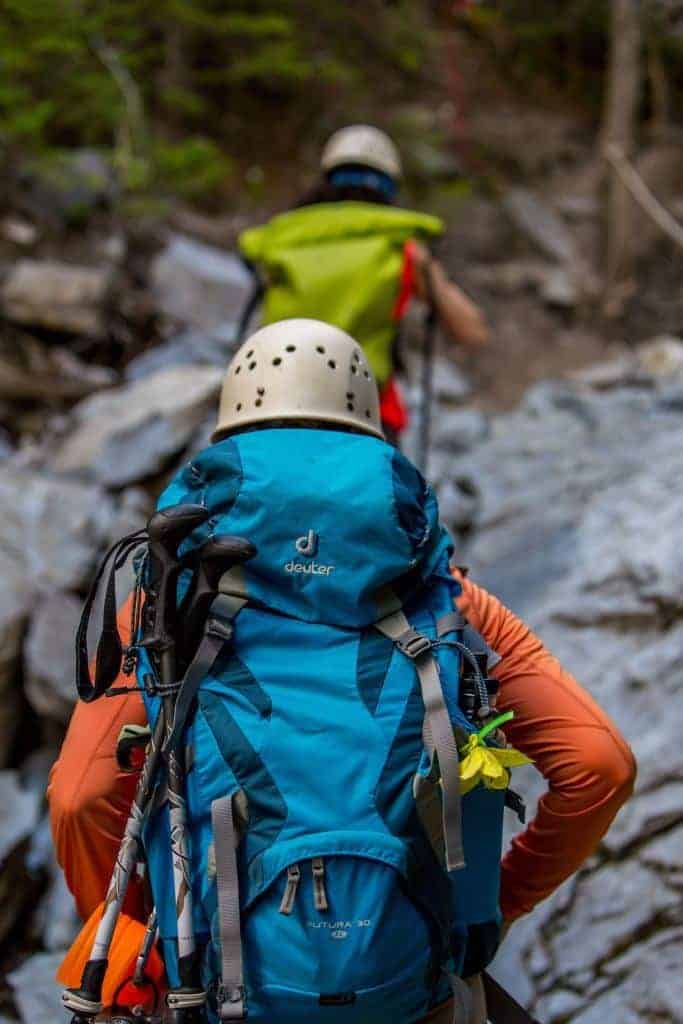Choosing the right footwear for hiking has created a serious paradox for choice between most hikers. Blisters, sore soles, hot spots, and twisted ankles are some of the problems you’ll definitely come across when you’re wearing the wrong hiking footwear. Of course. the decision of whether to buy boots or shoes for hiking will highly depend on you. Let us discuss that before taking any buying decision.
Thankfully, with the advancement in technology, hiking footwear now comes in a plethora of shapes and sizes that meet all your daily outdoor pursuits. Today, walkers are able to switch their heavy hiking boots with lighter hiking sandals, cross trainers, or hiking shoes to feel more comfortable while interacting with nature.
In this post, we will try to differentiate hiking boots from hiking shoes and discuss which ones are best to wear and in which scenarios.
Protection
The first thing you have to think of when you’re in the wild is the level of protection you’ll need. Depending on the regions you are planning to trek, you’ll definitely require a pair of footwear that will endure the tough conditions in the woods.
Hiking boots are the best when it comes to this department because first, they’re stitched from quality materials, and second, they have tough soles that protect your feet from possible injuries. Another huge advantage of hiking boots is their high ankles and backbones that provide ample support to your ankle protecting you from spraining or rolling when you step on rocks.
On the other hand, hiking shoes are light and have generally thinner soles. Although they do offer protection from debris, the level of protection can’t be compared to what hiking boots offer. They also lack high ankles like hiking boots, meaning there’s less ankle support.

Comfort
Comfort is one of the factors you have to be keen on when choosing hiking footwear. With hiking boots, we’ve seen that they’re designed with high ankles to support your ankles against sprains. For this reason, you’ll need to choose a boot that fits snugly without offering a wide range of movement.
On one hand, protection has been enhanced but on the other, the boot has not left out some space around your toes just in case your feet swell due to long strenuous hikes. This means that your hiking boot is likely to press you a lot causing a lot of discomfort when hiking.
Depending on where you’re hiking, you can opt to switch your boots with a pair of hiking shoes just to enhance your comfort. Hiking shoes are light and are made of flexible material that doesn’t restrict your feet at all. They offer a better range of movement and are breathable too meaning your feet will not overheat when trekking for long.
Although their soles are narrower (meaning you’ll potentially feel the rocks and bumps underfoot), most brands have improved their shoes by adding toe guards and tougher soles to shield your feet against miscellaneous rocks.
Climate
Most of the hiking boots found on this website are best suited for the winter and autumn seasons when the weather is quite cold. The main advantage of this is that the thick material construction combines well with hiking socks to offer immense warmth during the cold months.
The main downside though, is that breathability has totally been sacrificed meaning your feet are likely to over-sweat causing blisters during hot months.
In such a case, hiking shoes are the perfect alternatives as they’re designed with mesh patches that provide maximum breathability. These shoes are designed with lighter materials that dry faster in case of over-sweating. However, though, one drawback with these shoes is trekking during winter as they’re not designed to provide enough insulation or warmth to your feet.
Insulation
The reason why hiking shoes are preferred for hiking and trekking endeavors is due to their waterproof characteristics. This makes them the best for trekking in rainy and swampy regions as they don’t allow water to penetrate through even when fully submerged (the best-being rubber hiking boots).
Hiking shoes on their side are designed with light materials with multiple mesh patches meaning they won’t provide any waterproof protection. To try and compensate for this drawback, most manufacturers design their hiking shoes with special materials that dry up quicker than most hiking boots with mesh patches.
Conclusion
To summarize everything, hiking can sometimes be a tricky endeavor especially if you’re just starting out. While comfort is one factor you should check on, support and protection is the main priority that will define your success or failure.
Although the decision of whether to buy hiking boots or shoes will highly depend on you, buying hiking boots as a beginner is the best option as they offer more support and protection. However, as you subsequently graduate, you can now switch to hiking shoes as you’ll be proficient enough to walk with less protection.




